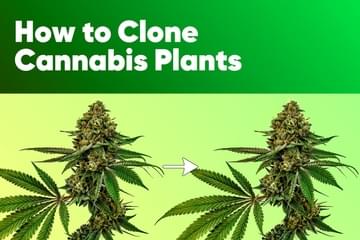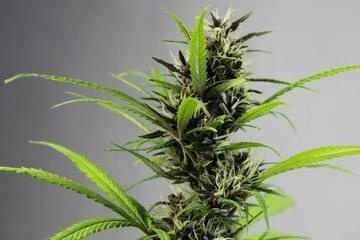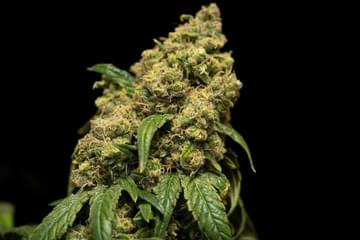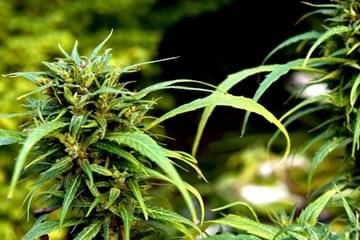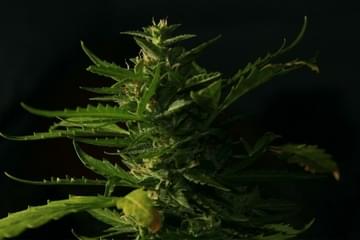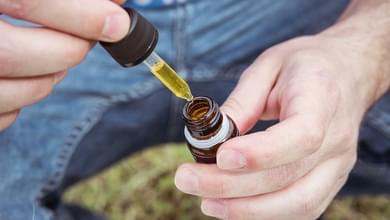
Full Spectrum Extracts: Everything You Need to Know
Published on 9/1/20
When it comes to the intricacies and fine details of marijuana education, cannabis extracts are one of the most complex areas of study. Outside of flower, nearly every product on dispensary shelves - from vape cartridges, edibles, and dabs to tinctures and topicals - is made using some form of extraction or concentration process. Just like the variety in growing techniques, consumption options, and strain choices, the cannabis extract umbrella covers dozens of different processes and final products. Today, we're going to delve into one of the industry's most sought-after concentrate styles - full spectrum extracts.
Whether you're a recreational user or a medical marijuana patient, if you've ever perused a dispensary menu, you've probably seen the term full spectrum extract (FSE) on vape cartridges or dab packaging. But even after you break down the acronym, do you know the true FSE meaning and can you tell the difference between high terpene full-spectrum extracts and their high cannabinoid counterparts? If not, we've got you covered with the basics of what makes an extract full-spectrum, how THC in full spectrum extract is concentrated, and what products to look for when you want a true entourage effect.
What Does Full Spectrum Mean?

Full-spectrum extracts are defined by their similarity to the original flower it was concentrated from. Instead of isolating specific cannabinoids like THC, CBD, CBG, and CBNor specific flavor-packed terpenes, full-spectrum extracts contain the same multitudes of cannabinoids, terpenes, and other natural compounds that make up each specific plant.
Using a variety of different extraction techniques, cannabis manufacturers tweak and tune techniques to keep as much of the valuable cannabinoids, terpenes, proteins, phenols, and esters together as possible. At the same time, full-spectrum extracts vary in the concentration of fats, lipids, and other less desirable cannabis compounds, which are also typically separated from the plant in the extraction process. To make that split easier, it is common for full-spectrum extractors to flash-freeze their starting material and follow live rosin or live resin production methods, as super-low temperatures help retain valuable compounds while pushing away the excess plant material.
Because every different cannabis strain contains a unique profile of cannabinoids, terpenes, and other compounds, each full-spectrum extract aims to preserve that unique structure as it is concentrated into a more refined product. In their final form, full-spectrum extracts contain a concentrated quantity of cannabinoids, terpenes, and other cannabis compounds that are directly relative to their proportions in the live plant. In the form of dab-ready diamonds and sauce, full-spectrum concentrates can surpass 15% terpenes and more than 50% total cannabinoids. By containing the true essence of the plant, full-spectrum extracts are renowned for their entourage effect, blending commonly-known compounds like THC and terpenes with lesser-known cannabinoids like CBG, CBN, and THCA.
How to Make High Cannabinoid Full Spectrum Extract
Among cannabis concentrates, creating high-quality full-spectrum cannabis extracts is one of the hardest processes in the industry. When FSE is made using solvents, several arduous and intricate additional steps are usually taken to separate and remove undesirable compounds. All the while, the process must keep the plant's desirable compounds together and not degrade them, unlike other popular concentrates like distillates and isolates. Currently, three main methods are used to produce high cannabinoid and high terpene full-spectrum extract.
Volatile Hydrocarbons

First, and most common, extract artists use super cold volatile hydrocarbons like butane or propane to strip all of the plant's chemical compounds into a soupy solvent mix. From there, solvents are evaporated using a vacuum purge. Then, an additional super cold solvent like ethanol will be added in temperature-sensitive processes like dewaxing and winterizing that further separate undesirable plant matter from precious cannabinoids, terpenes, flavonoids, and more. Throughout the full-spectrum butane hash oil (BHO) production process, minor changes in temperature, timing, and solvent can cause significant differences in the consistency, potency, and chemical makeup of your final extract.
CO2 Extraction
If your favorite THC extract company isn't a fan of volatile hydrocarbons, there's a good chance they're using supercritical CO2 extraction methods. Once again relying on precise temperatures, carbon dioxide is turned from a gas to a liquid and is pushed through raw cannabis to strip off desirable compounds. But while BHO and propane extracts must go through further post-extraction filtration, CO2 extractors use standardized pressure and temperatures to remove only the cannabinoids and terpenes while leaving behind the leftover fats, lipids, and plant material.
Low Heat & Heavy Pressure
Finally, a growing number of extract artists are foregoing the use of solvents altogether in favor of full-spectrum rosin products. By applying low heat and heavy pressure to either flower or water hash housed in a fine-micron mesh sleeve, a potent blend of cannabinoids, terpenes, and other sensitive compounds pour out in a ready-to-dab mixture. Because the rosin process is less precise than BHO or CO2 extraction, the resulting product often contains small amounts of fats and lipids but is still largely considered full-spectrum thanks to its high concentration of cannabinoids and terpenes. To create the best concentrate possible, extract artists often use fresh-frozen cannabis and low-temperature pressure plates to produce live rosin, which is renowned for its complex terp profile and high potency.
Full Spectrum Extract Products

Now that we know what full-spectrum extracts are and how they're made, what products should you looking for when you want to try out the much-heralded concentrates? Because every product on dispensary shelves besides flower is made using some sort of cannabis extract, top-shelf edibles, topicals, and tinctures are often made with full-spectrum oils. But when it comes to the most popular full-spectrum products, dabs and marijuana carts are at the top of the heap.
Live rosin dabs are typically considered full-spectrum, as well as many live resins. Usually, full-spectrum live resins are sold as diamonds and sauce, or a mixture of liquid high terpene full-spectrum extract and crystalized high cannabinoid FSE. Both products are also sold separately, but for a true entourage effect containing the most terpenes and cannabinoids possible, combined diamonds and sauce is the creme de la creme of BHO extracts.
If you're not into dabs, plenty of legal cannabis companies offer full-spectrum extracts in oil cartridge form. In addition to popular distillates, weed cartridge producers prefer a BHO cartridge or live resin that often falls under the full-spectrum umbrella. Whether you prefer an indica vape oilor asativa vape oil, full-spectrum cartridges offer a strain-specific experience that is not always available in distillate carts.
Unfortunately, due to inconsistencies in regulations across legal cannabis states, no law requires full-spectrum oils to be labeled properly or would stop more refined products from being mislabeled as full-spectrum. But if you use the above knowledge, review lab test results, and ask your budtender pertinent questions, you'll be walking out of your local dispensary with a cannabis concentrate that is perfectly matched to its plant parent.
Do you have a favorite full-spectrum cannabis extract? Let us know in the comments below!










